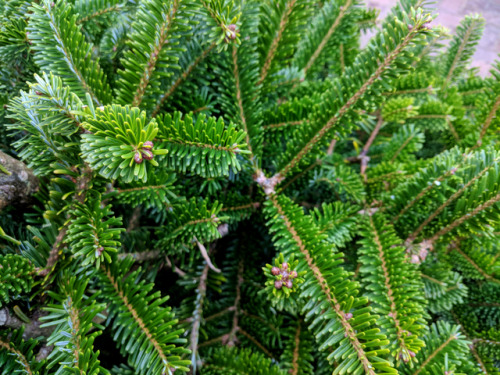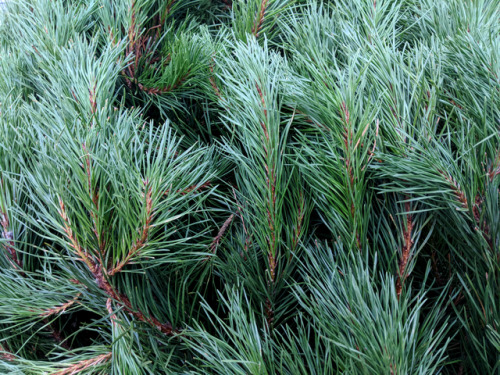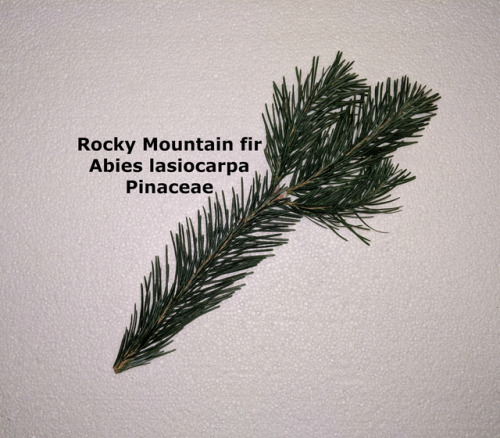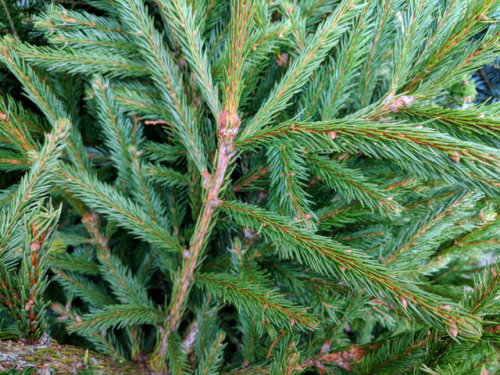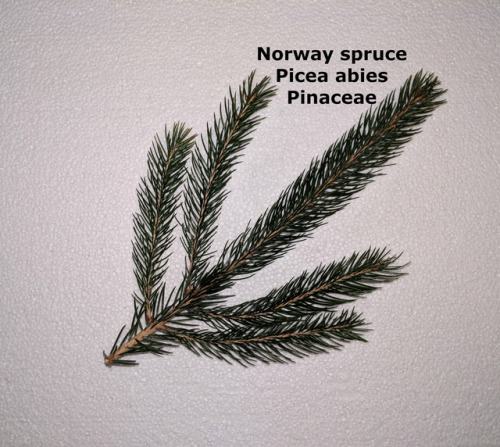regnum-plantae: Know your festive conifers I mentioned before that I started working in a garden cen
regnum-plantae: Know your festive conifers I mentioned before that I started working in a garden centre -I’m so happy my change-of-career plans are already beginning to work!- and today it’s actually been a whole month. This first month there has been decisively marked from the very beginning by the fact Christmas is approaching: my first day happened to be when the main delivery of Christmas trees arrived, so it was entirely spent unloading hundreds of conifers, which we then freed from their nets, separated, measured and finally positioned in their pens during the following days. Needless to say, I’ve learnt a lot about the most common Christmas trees you could find in a garden centre in the UK this time of the year. I’ve also ended up reading briefly about the tree farming industry and what it entails in the UK, rest of Europe and America with their differences. But this is not meant to be a post about a tradition which is quite new to me -decorating a real cut tree is not nearly as popular in Italy- its history or the industry it supports, so let’s get to the trees. From top to bottom, they are ordered by their popularity as I’ve experienced it, although most of the stock was of the first two species and we only offered a few of the other three. 1. Nordmann fir Abies nordmanniana, Pinaceae Very large tree native to the southern and eastern coast of the Black Sea. It’s considered the favourite and the best seller in the UK for two main reasons: it retains its needles, which are soft and have a notched tip, and its spaced layers of symmetrical, almost horizontal, sturdy branches are ideal to accommodate heavy or large ornaments. Especially when young and under 6ft it can look quite wide and bushy at the bottom with a sparse top and often a very long and straight leader. 2. Fraser fir Abies fraseri, Pinaceae Medium-sized tree native to the southeastern Appalachian Mountains. Also very popular, mostly because it’s sheared in the field to retain a conical shape and this results in a slimmer bottom, ideal for small spaces, and high density of soft branches, which work better with small, light ornaments. The stem and branches seem to grow in a sinuous fashion and the tree often has more than a single central leader tip, which is generally not straight, but twisty too. Its citrus-y sent and the ability to retain its needles help making it a popular choice. 3. Lodgepole pine Pinus contorta, Pinaceae Medium to large tree or shrub, depending on the subspecies, native to western and north-western North America. As the only Pinus in the list, it looks rather different from the other trees and decorating it can be a challenge, people seem to either love it or hate it, so we only stocked a handful of them. It tends to be quite bushy and, as the name suggests, the trunk can often be twisted. It smells like clean pine forest and is very good at holding its needles. 4. Rocky Mountain fir Abies lasiocarpa, Pinaceae Generally medium-sized tree which shares its native area with the lodgepole pine in north-western North America. This was a novelty species at the garden centre and we only stocked a few large ones. Most people seemed to love its imposing, but airy and symmetrical structure and blue-grey hue and it’s probably my personal favourite. Its scent is aromatic and as interesting as the colour. 5. Norway spruce Picea abies, Pinaceae Large tree native to an area spanning from the mountains of southern Europe to Siberia. Most people recognise it as the traditional, old-school Christmas tree, however it has now fallen out of fashion as the worst performing in the list when it comes to retaining its needles. For this reason we mostly stocked pot-grown trees of this species, and just a handful of small, cut ones. The short, thin needles give it a feathery look compared to the others and its structure is similar to that of the Nordmann fir. Now, just out of curiosity, I’d love to see lists made by my counterparts in the rest of the world! Also, if you have bought a tree, what species is it? -- source link
Tumblr Blog : regnum-plantae.tumblr.com



